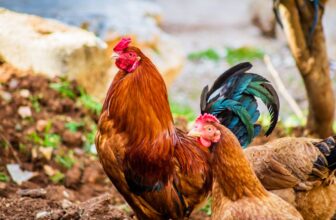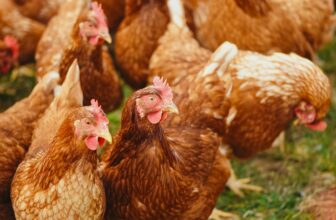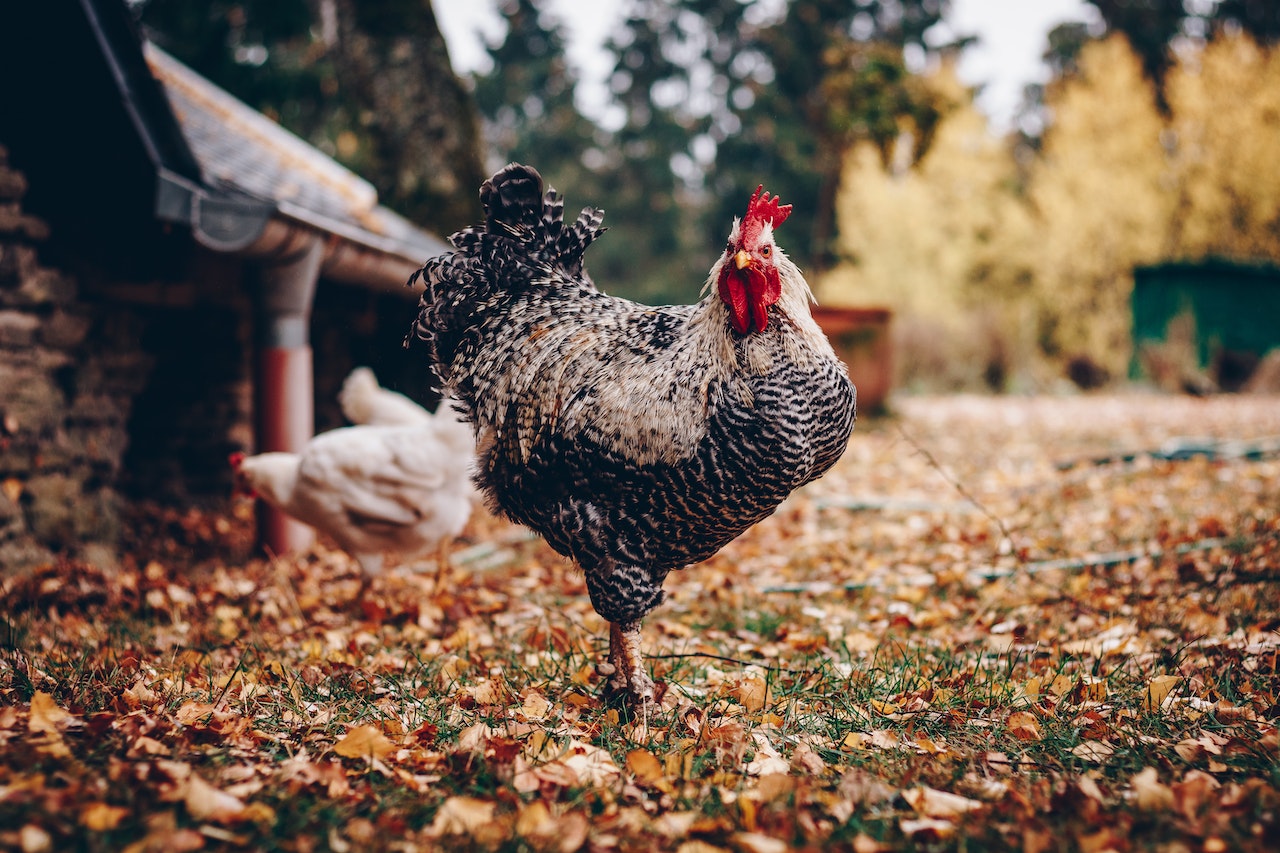
Table of Contents
Are you ready to add some feathered friends to your homestead? Choosing the perfect chicken breed for your backyard can be a fun and rewarding experience, but with so many options available, it can also be overwhelming. Don’t worry, as we’ve got you covered!
In this article, we’ll be exploring 20 of the best chicken breeds for backyard coops. Whether you’re looking for a friendly breed that’s great with kids, a bird that lays colorful eggs, or a chicken that’s easy to care for, we’ve got something for everyone. So grab your coffee and let’s dive into the wonderful world of backyard chickens!
Rhode Island Red
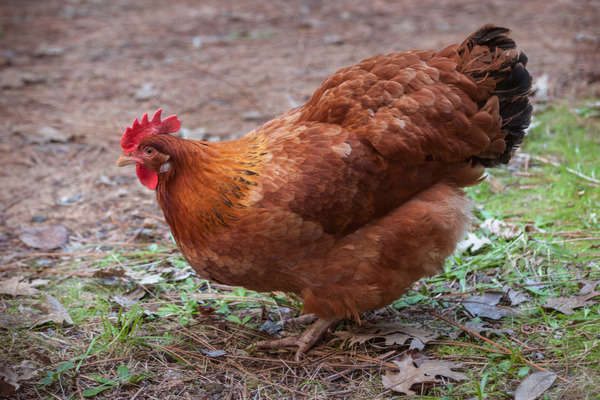
If you’re looking for a dependable and hardworking bird that’s also great for laying eggs, you can’t go wrong with the Rhode Island Red.
This breed is one of the most popular choices for backyard flocks, and for good reason. Not only are they a beautiful rusty-red color, but they also have a friendly and docile disposition that makes them easy to handle and a great choice for families with kids.
When it comes to egg-laying, Rhode Island Reds are known for their consistency and productivity. They can lay up to 300 brown eggs per year, making them a great choice for those who want a reliable source of fresh eggs.
Another great thing about Rhode Island Reds is that they are low-maintenance and hardy birds. They’re adaptable to a variety of climates and can handle both hot and cold temperatures with ease. They also tend to be relatively resistant to common chicken ailments, making them a great choice for first-time chicken owners.
Overall, if you’re looking for a friendly, dependable, and productive bird for your backyard flock, the Rhode Island Red is definitely a breed to consider.
Buff Orpington
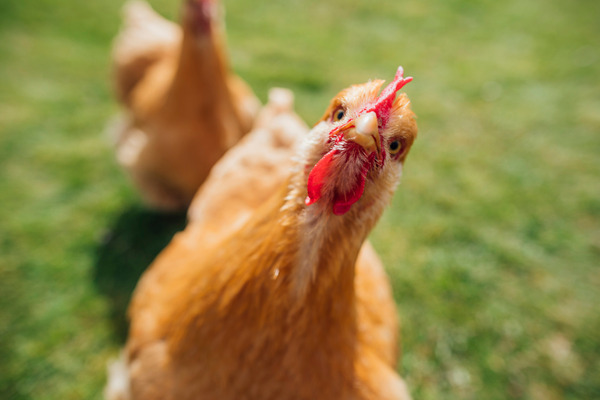
This breed is known for its docile and affectionate nature, making it a popular choice for backyard flocks. They have a beautiful golden buff color and fluffy feathers that make them a joy to watch and hold.
Buff Orpingtons are also great layers, producing around 200-280 brown eggs per year. The eggs are medium to large in size and have a rich and flavorful yolk.
One of the things that makes Buff Orpingtons a great choice for backyard flocks is their ability to handle cold weather. Their thick feathers provide insulation, and their calm temperament means they won’t get stressed out during the winter months.
Plymouth Rock
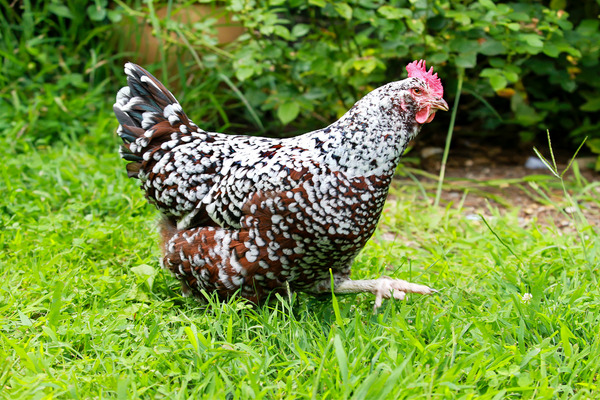
Plymouth Rock chickens are known for their striking black and white stripes, making them a beautiful addition to any backyard flock. But it’s not just about looks – Plymouth Rocks are also friendly and easy to handle, making them a great choice for families with children.
When it comes to egg production, Plymouth Rocks are highly productive birds. They can lay up to 280 brown eggs per year, making them a reliable source of fresh eggs for your family.
Another plus point about Plymouth Rocks is that they’re hardy and can handle a variety of weather conditions. They’re adaptable to both hot and cold temperatures, so you won’t have to worry about them during extreme weather.
Australorp
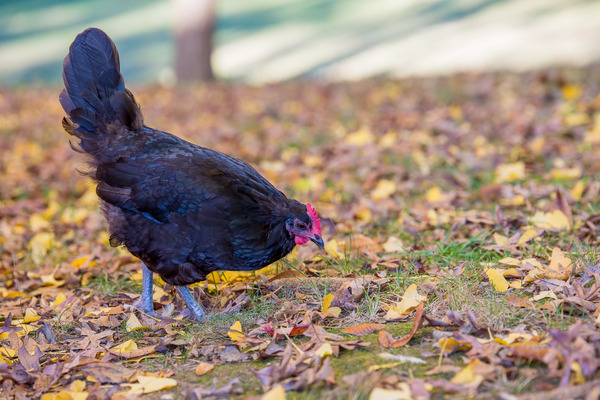
Australorps are known for their excellent egg-laying capabilities, producing around 250-300 brown eggs per year. They also have a calm and friendly temperament, making them a great choice for families with children.
Australorps have a beautiful glossy black color and a sleek and athletic build. They’re also hardy birds that can adapt to a variety of climates, making them a great choice for backyard flocks in different regions.
If you’re looking for a low-maintenance bird, the Australorp is definitely worth considering. They’re easy to care for and don’t require a lot of special attention. Plus, they tend to be healthy and resistant to common chicken ailments.
Sussex
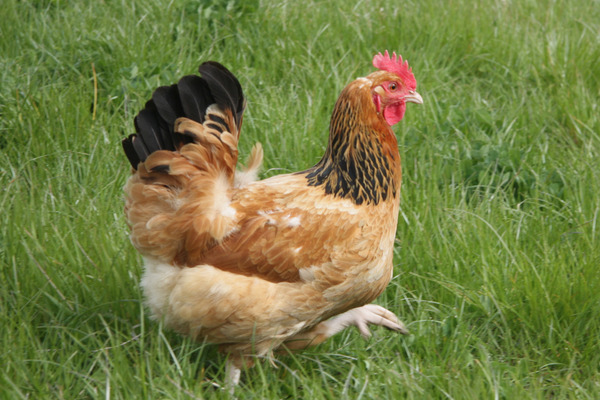
Sussex chickens are hardy birds that can handle a variety of weather conditions. They’re adaptable to both hot and cold temperatures, so you won’t have to worry about them during extreme weather.
This breed is known for its stunning white feathers with black or red markings, giving them a classic and elegant look. They’re also friendly and easy to handle, making them a great choice for families with kids.
In terms of egg-laying, Sussex chickens are highly productive, producing up to 250-300 brown eggs per year. The eggs are medium to large in size and have a delicious and rich flavor.
Wyandotte
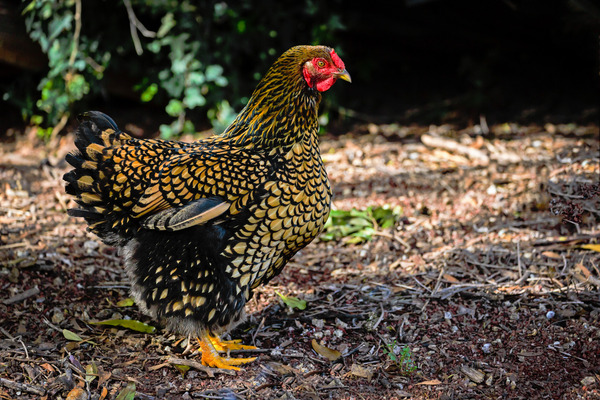
If you’re looking for a hardy and versatile bird that’s also a great egg-layer, you might want to consider the Wyandotte chicken.
This breed is known for its striking feather pattern, which includes a laced design in shades of black, silver, gold, or blue. They have a round and robust build, making them a great choice for meat production as well as egg-laying.
Wyandottes are friendly and docile birds that are easy to handle and make great pets for families with children. They are also highly productive, laying up to 200-250 brown eggs per year.
Leghorn
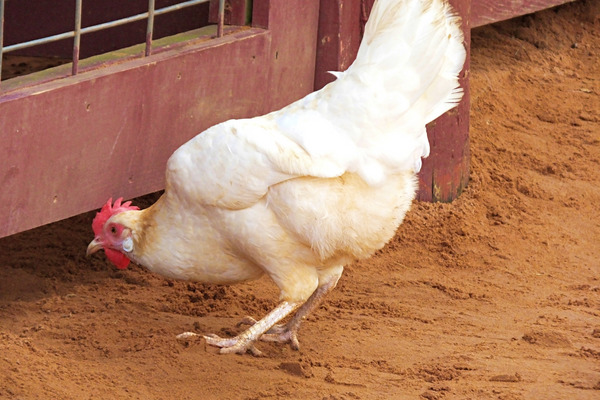
This breed is known for its slim and athletic build, with a striking white feather color and bright red comb and wattles. They’re also highly active and love to forage, making them a great choice for free-range flocks.
Leghorns are excellent egg-layers, producing up to 300 white eggs per year. They also tend to be low-maintenance birds that are easy to care for.
Overall, Leghorns are great at foraging and egg-laying, making them a practical choice for both small and large backyard flocks.
Silkie
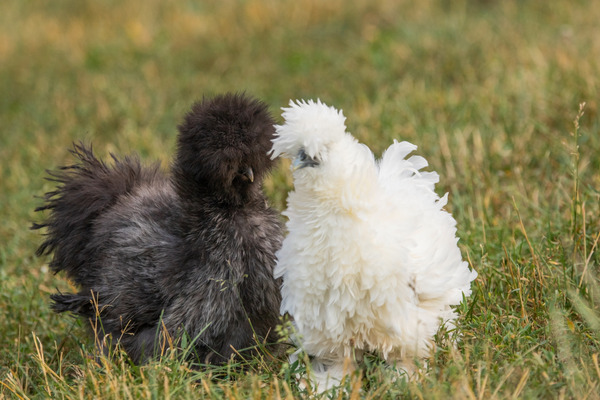
Silkies have fluffy and silky soft feathers, which come in a range of colors including white, black, blue, and buff. They also have an unusual feature of having five toes instead of the typical four. Silkies are docile and friendly birds that make great pets for children. They’re also known for their broodiness, making them great mothers if you’re looking to hatch your own chicks.
One interesting fact about Silkie chickens is that they have a reputation in Chinese culture for having medicinal properties. They’re believed to have anti-inflammatory and anti-aging effects and are often used in traditional Chinese medicine.
Easter Egger
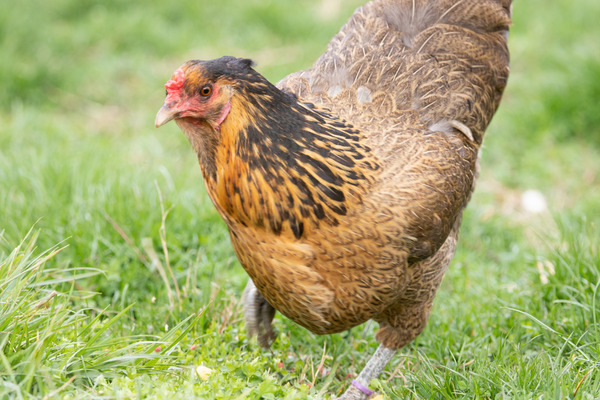
This breed is known for its fun and quirky personality, as well as its ability to lay eggs in a variety of pastel colors, including blue, green, and even pink! Easter Eggers are not a true breed, but rather a hybrid that’s been bred to lay colored eggs.
In addition to their egg-laying abilities, Easter Eggers are also known for their hardiness and adaptability, making them a great choice for backyard flocks in a range of climates.
One fun fact about Easter Eggers is that the color of their eggs can vary from bird to bird, depending on their genetics. So even within a single flock, you may see a range of different colored eggs.
Cochin
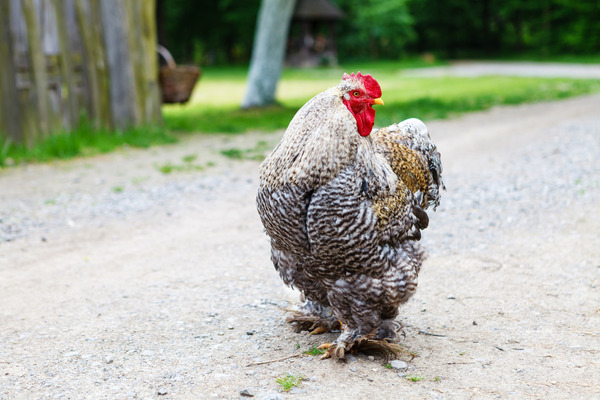
Cochins are known for their massive size and abundant feathering, which can make them look like little fluffy balls of feathers. They’re also known for being very docile and friendly. They come in a variety of colors, including black, blue, buff, and white, and they have feathered legs and feet. This can make them look like they’re wearing little chicken boots, which is both adorable and practical in colder climates.
What’s unique about Cochins is that they were originally imported from China to Europe and the United States in the mid-1800s. They quickly became popular as exhibition birds, and even today, they’re still prized for their show-quality appearance.
Overall, if you’re looking for a big, friendly, and fluffy bird that’s also a great egg-layer, the Cochin chicken is definitely a breed to consider. With their unique appearance and easy-going personality, they’re sure to be a hit with both you and your flock!
Brahma
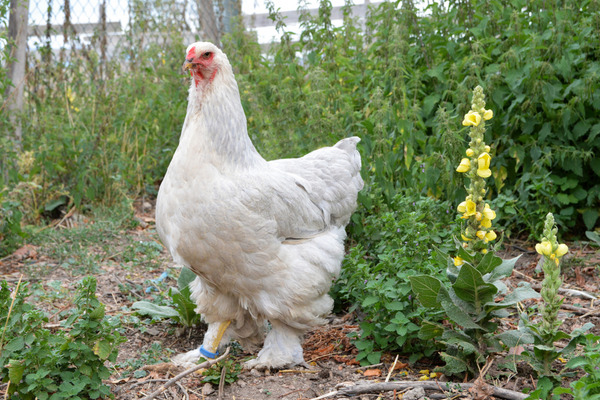
Are you in the market for a big and beautiful bird that’s both friendly and hardy? Look no further than the Brahma chicken!
This breed is well-known for its impressive size, with some individuals weighing in at over 12 pounds. They have a calm and gentle personality, making them great for backyard flocks with children or other pets.
Brahmas also have a distinctive appearance, with feathered legs and feet, a large pea comb, and a broad, rounded body. They come in a variety of colors, including buff, dark, and light, and some individuals even have striking black and white patterning.
Brahmas were originally bred in the United States in the mid-1800s, and they became popular for their size and hardiness. They were even used as a meat bird in some parts of the country, due to their large size and flavorful meat.
Orpington
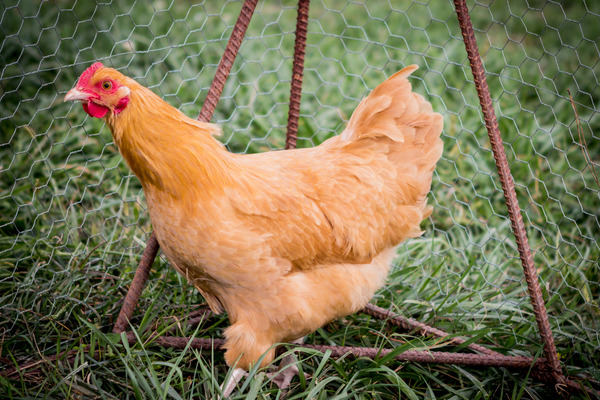
Orpingtons were first developed in England in the late 1800s. They come in several colors, and they have a round, plump appearance that makes them look like little balls of fluff.
But Orpingtons aren’t just a pretty face – they’re also great egg-layers, with some individuals laying up to 280 eggs per year. And because they’re a docile and friendly breed, they’re perfect for backyard flocks that include children or other pets.
Orpingtons were reportedly a favorite breed of Queen Elizabeth II of England. She even kept a flock of them at her Sandringham Estate, where they were prized for their friendly personalities and large, delicious eggs.
Marans
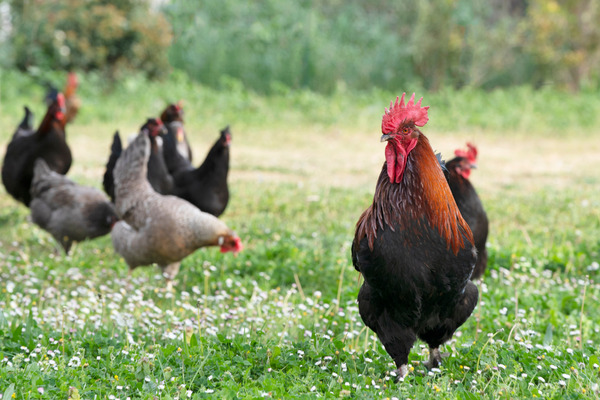
Have you heard of the Marans chicken? This breed, originally from France, is known for its dark, chocolate-brown eggs, which are prized by many egg enthusiasts.
In addition to their unique egg color, Marans chickens are also known for their hardiness and docile personalities. They come in a variety of colors, including black, copper, and blue, and they have a sleek, elegant appearance.
Marans chickens were originally bred for their meat, not their eggs. But over time, their egg-laying abilities were recognized and they became a popular breed for backyard flocks.
Another unique fact about Marans chickens is that they were reportedly kept by Ernest Hemingway at his home in Cuba. Hemingway was known for his love of animals, and his Marans chickens were no exception.
Delaware
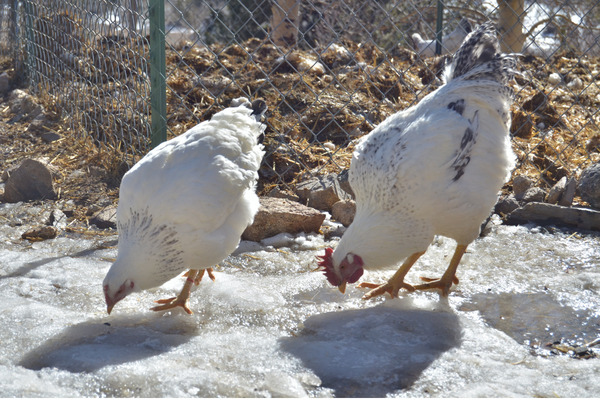
Delaware chickens were first developed in the state of Delaware in the 1940s, where they became popular for their large, brown eggs and friendly personalities. They have a distinctive black tail and neck feathers, which make them stand out from other white breeds.
These chickens were reportedly a favorite breed of former US President Franklin D. Roosevelt who kept a flock of them at his Hyde Park estate in New York, where they were prized for their hardiness and egg-laying abilities.
In addition to being great egg-layers, Delaware chickens are also known for their calm and friendly personalities, which make them a great addition to any backyard flock. They’re easy to care for and handle, and they’re great with children and other pets.
Hamburg
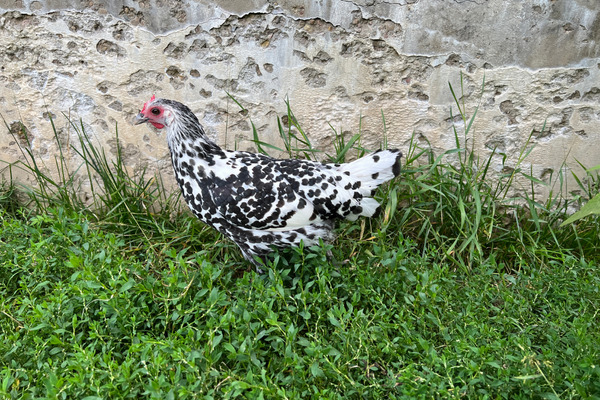
Hamburg chickens are an old breed, dating back to at least the 14th century, and they were originally kept for both meat and eggs. However, over time they became known for their excellent egg-laying abilities, producing up to 200 eggs per year!
One unique fact about Hamburg chickens is that they are known for their high energy and active personalities. They love to forage and explore, and they are great at catching insects and other small prey. If you’re looking for a breed that will keep your backyard buzzing with activity, Hamburg chickens are definitely worth considering!
Another interesting fact about Hamburg chickens is that they come in a variety of colors, including silver-spangled, golden-spangled, and black. However, no matter what color they are, they all have the same spunky and adventurous personality that makes them a joy to watch.
Faverolles
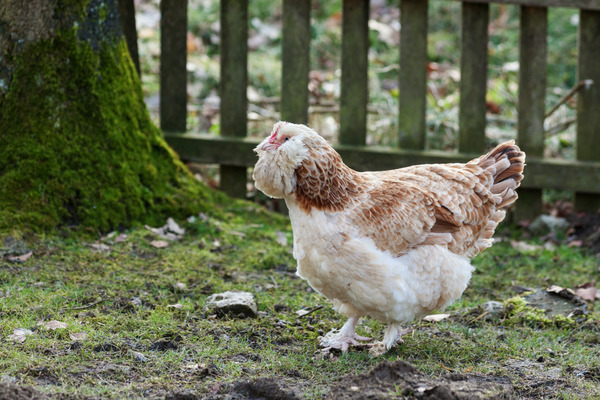
Faverolles chickens are a dual-purpose breed, meaning they are good for both meat and eggs. However, they’re especially well-known for their sweet and docile temperament, making them great pets and show birds.
These chickens have five toes instead of the usual four and their feathered feet and toes make them look like they’re wearing little feathered slippers! They come in a variety of colors, including salmon, black, blue, and cuckoo.
Jersey Giant
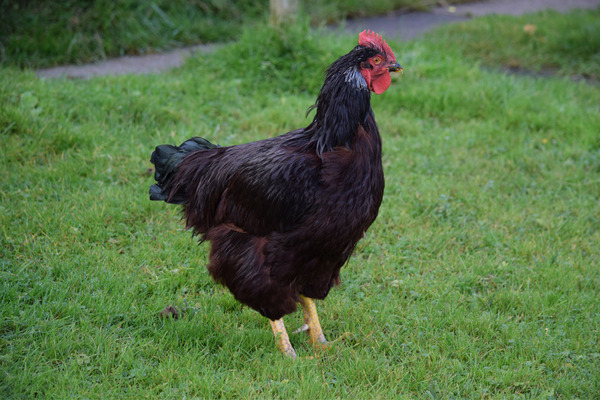
As the name suggests, this breed is known for being one of the largest chicken breeds out there, and they’re sure to make a statement in your backyard flock!
Despite their large size, Jersey Giants are known for being docile and easy-going birds, making them great pets for families. They’re also good layers, with hens laying large brown eggs, making them an all-around useful breed.
Jersey Giants were originally bred as a meat bird, but their size made them impractical for commercial production. Nowadays, they’re mainly kept as pets and show birds due to their striking appearance and friendly personalities.
These chickens come in two colors: black and white. The black variety is more common, but the white variety is becoming more popular among backyard chicken keepers.
New Hampshire Red
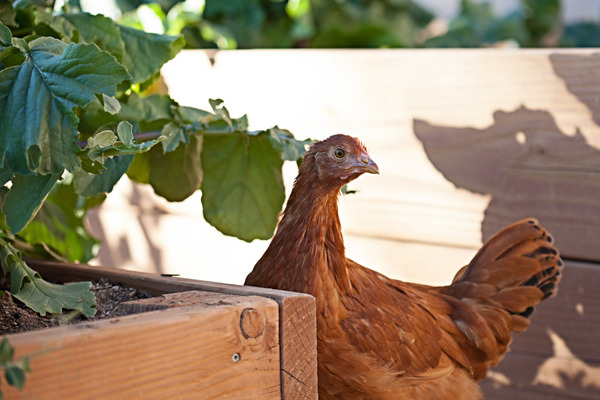
These birds are known for their beautiful deep red feathers, which are sure to turn heads in your backyard flock. But not only are they pleasing to the eye, they’re also great layers of large brown eggs, making them a practical addition to any backyard setup.
What’s interesting about New Hampshire Reds is that they were actually developed in the United States in the early 20th century as a dual-purpose breed, meaning they were bred to be good for both meat and egg production.
New Hampshire Reds are also very cold-hardy, meaning they can tolerate colder temperatures better than some other breeds. This makes them a great choice for chicken keepers in northern climates.
Barnevelder
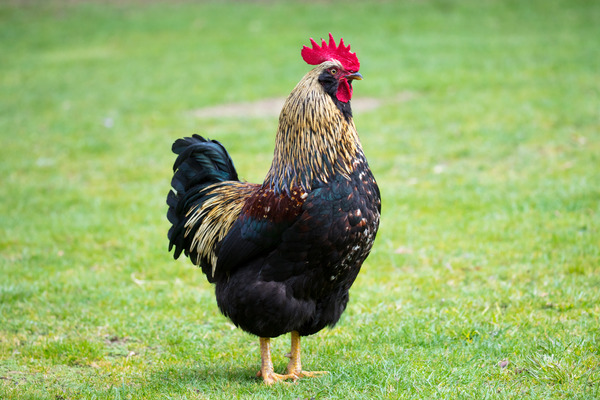
These birds are named after the Dutch town of Barneveld and are known for their stunning feather patterns. They have a striking black and reddish-brown “double laced” pattern on their feathers that looks almost like lace, making them a gorgeous addition to any backyard flock.
But these birds aren’t just good-looking; they’re also great layers of large brown eggs, making them a practical choice as well. And because they were originally bred in the Netherlands, they’re well-suited to cooler climates and can withstand cold weather better than some other breeds.
Barnevelder chickens are often referred to as the “chocolate eggers” because their eggs have a darker brown color that’s reminiscent of chocolate. So not only are they beautiful to look at, but they also produce delicious eggs!
So if you’re looking for a breed that’s both beautiful and practical, as well as friendly and easy to handle, consider adding some Barnevelder chickens to your backyard flock!
Ameraucana
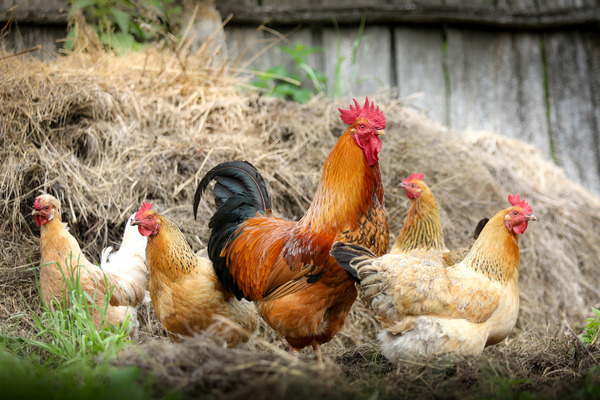
Ameraucanas are known for their striking blue eggs, which are a result of a genetic mutation that affects the production of the pigment that colors the eggshell. So not only are they great layers of large eggs, but their eggs are also a unique color that will make your breakfasts and baked goods look even more special!
These birds are also known for their unique appearance. They have a beard and muffs around their face, which makes them look like they have a fluffy beard, just like a hipster! Plus, they come in a variety of colors so you can choose the ones that will complement your backyard aesthetics.
Ameraucanas are known for being friendly and easy to handle, which makes them a great choice for families with children or for those who want to interact with their chickens. They’re also good foragers, so they’ll enjoy exploring your backyard and eating insects and other small creatures.
Choosing Chickens for Your Backyard – What to Consider
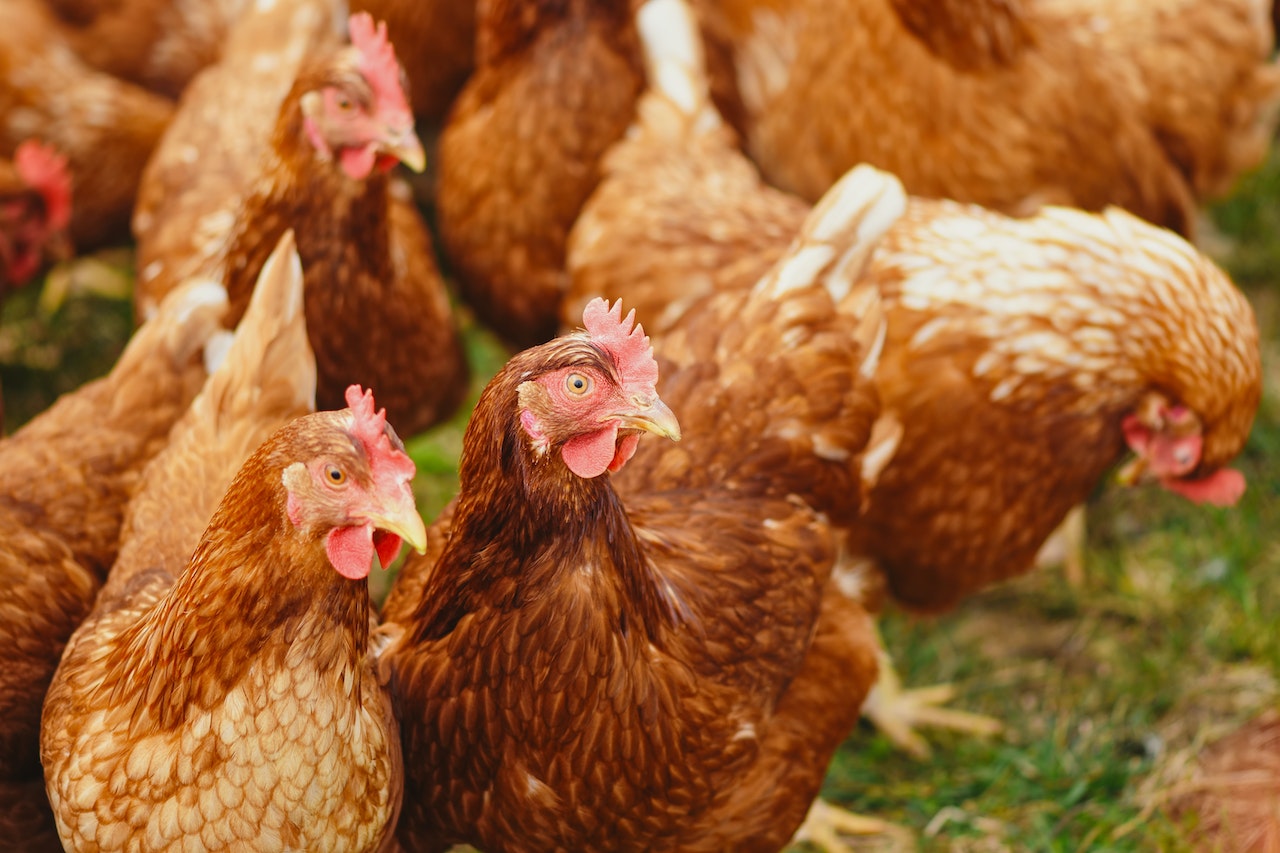
When it comes to choosing chickens for your backyard, there are several factors to consider to ensure that you select the right breed for your needs. Here are some of the most important things to keep in mind:
Climate
The first thing to consider is the climate in your area. Some chicken breeds are better suited for colder climates, while others do well in warmer temperatures. It’s important to choose a breed that can thrive in your local climate to keep your chickens healthy and happy.
Space
Chickens need adequate space to move around and stretch their wings. Consider the size of your backyard and the number of chickens you want to keep before choosing a breed. Some breeds are better suited for smaller spaces, while others require more room to roam.
Egg-laying
If you’re primarily interested in keeping chickens for their eggs, you’ll want to choose a breed that’s known for its egg-laying abilities. Some breeds lay more eggs than others, while others produce eggs of different colors and sizes.
Temperament
Some chicken breeds are more docile and friendly than others, making them easier to handle and interact with. If you have children or plan to spend a lot of time with your chickens, a breed with a gentle temperament may be a good choice.
Purpose
Finally, consider why you want to keep chickens in your backyard. Some breeds are better suited for meat production, while others are primarily kept for their eggs or as pets. Understanding your goals for keeping chickens will help you choose the breed that best fits your needs.
By considering these factors and doing your research, you can choose the right breed of chicken for your backyard and ensure that your birds thrive in their new home.
Wrapping Up
Choosing the best backyard chicken for you can be a fun and exciting process. There are so many breeds to choose from, each with their own unique qualities and characteristics. Whether you’re looking for a chicken that lays colorful eggs, is easy to handle, or has a striking appearance, there’s a breed out there that will fit your needs.
Remember, when choosing a chicken, it’s important to consider factors like climate, space, and temperament. By doing your research and selecting the right breed for your backyard, you’ll be able to enjoy fresh eggs and the companionship of these fun and fascinating creatures for years to come.
So go ahead and take the plunge – start your own backyard flock today and discover the joys of chicken-keeping!




